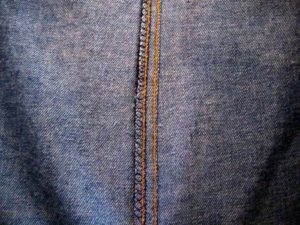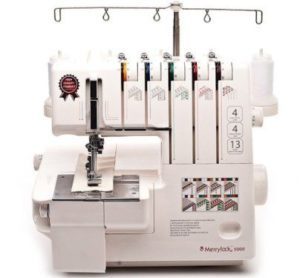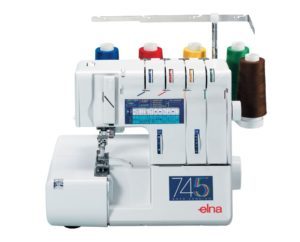 For a professional and even amateur sewing, one sewing machine will not be enough. The edges of the product must also be processed. This work protects the product from shedding edges and gives it an attractive appearance. With such a machine, you can sew products that will not differ much from products purchased in clothing stores.
For a professional and even amateur sewing, one sewing machine will not be enough. The edges of the product must also be processed. This work protects the product from shedding edges and gives it an attractive appearance. With such a machine, you can sew products that will not differ much from products purchased in clothing stores.
Overlock working principle
The content of the article
- Overlock working principle
- What types of operations does overlock perform?
-
Overlock operation scheme
- Threading
- Mode selection
- Fabric processing
To start working on the overlock, you first need to thread the thread. The full principle of operation of this wonderful machine is as follows:
- The seamstress runs the threads necessary for basting the edges of clothing.
- Then the necessary modes are configured.
- Then proceed to the processing of the product.
Its processing is as follows:
- The needle pierces the fabric. Using the loopers that the overlock is equipped with, the edge is marked.
- The knife cuts off excess material. These residues fall into the trash.
- The conveyor draws the fabric during the processing process.

Important! To work with delicate materials, you can install a removable converter.
What types of operations does overlock perform?
These machines are optional equipment. But they perform a very important function of processing the edges of clothing. In fact, this is their only role. Only different types of seams can differ depending on the material. For what materials may processing vary?
- Knitwear
- Delicate materials that require thinner two-thread seams.
- Elastic materials. They are used for sportswear. Due to its ductility, it does not break during the sudden movements of athletes. Swimming accessories also need such an elastic treatment.
Conditionally processing edges can be divided into two operations
- Single edge processing. Typical sewing operation. The hem of the dress, the edges of various garments are marked with a certain seam. Modes are selected by the seamstress independently. The difference is only in what kind and for what fabric there will be a seam. Otherwise, the principle of operation is the same. The main purpose of this treatment is to prevent the edges from crumbling and blooming.
- Processing and simultaneous joining of two pieces of material. This operation is used in order to save. Two flaps are interconnected by sketching them on the overlock. They not only connect. At the same time, the edge is trimmed and processed. Such an operation has a double effect. And the flaps connect, and the edge processes. Thanks to this technique, it has become possible to sew clothes from various pieces of fabric. It looks stylish and does not interfere with the inside.
- Drapery fabric. This operation consists in creating folds on matter by pulling it up. Overlock can perform such an operation. Need drapery for decorating various types of clothes with folds. It can also be used in interior elements.
-
Decorative stitches. Overlock not only cuts and marks the edges to prevent them from shedding. It can be used to create decorative seams. These seams can decorate clothes.

Important! The number of seams can be different. Such an assortment depends on the overlock model.
Overlock operation scheme
The operation of the overlock occurs cyclically. Schematically, it can be divided into two processes. The first process is threading. The second process can be considered the edge treatment itself. Also, the overlock operation scheme can be clearly seen on the videos presented on the Internet.
Threading
The required number of coils is selected. It depends on which product you need to process. And what fabric it is made of. Next, the threads are pulled into special holes. The final thread path is needles and looper.
After threading, you need to check how the seam will be sewn. To do this, use a special flap of fabric. It can be stored in the accessory compartment. If there are no complaints about the received seam, you can get to work.
Mode selection
This process can be considered intermediate. It’s not necessary to set up the mode every time. If the desired mode is already selected, and it suits, then this process is skipped. The fabric is immediately processed.
Fabric processing
After threading, the fabric is laid on the overlock. Using the presser foot, it is attached to the work surface. Then the overlock is started. The needles pierce the fabric, and the looper winds the transverse thread. Then the fabric pulls and the loop tightens. So the seam is formed.
Overlock is necessary for both professionals and amateurs. Although it is an additional sewing machine, without it it is difficult to make good practical clothes from many types of fabric. This is especially true for fabric, which, when trimmed, begins to crumble.


